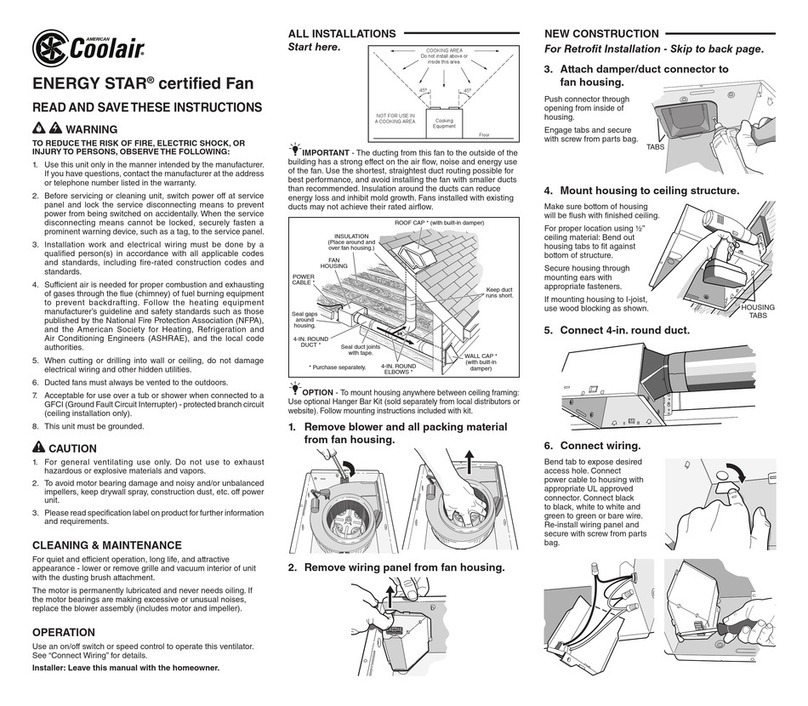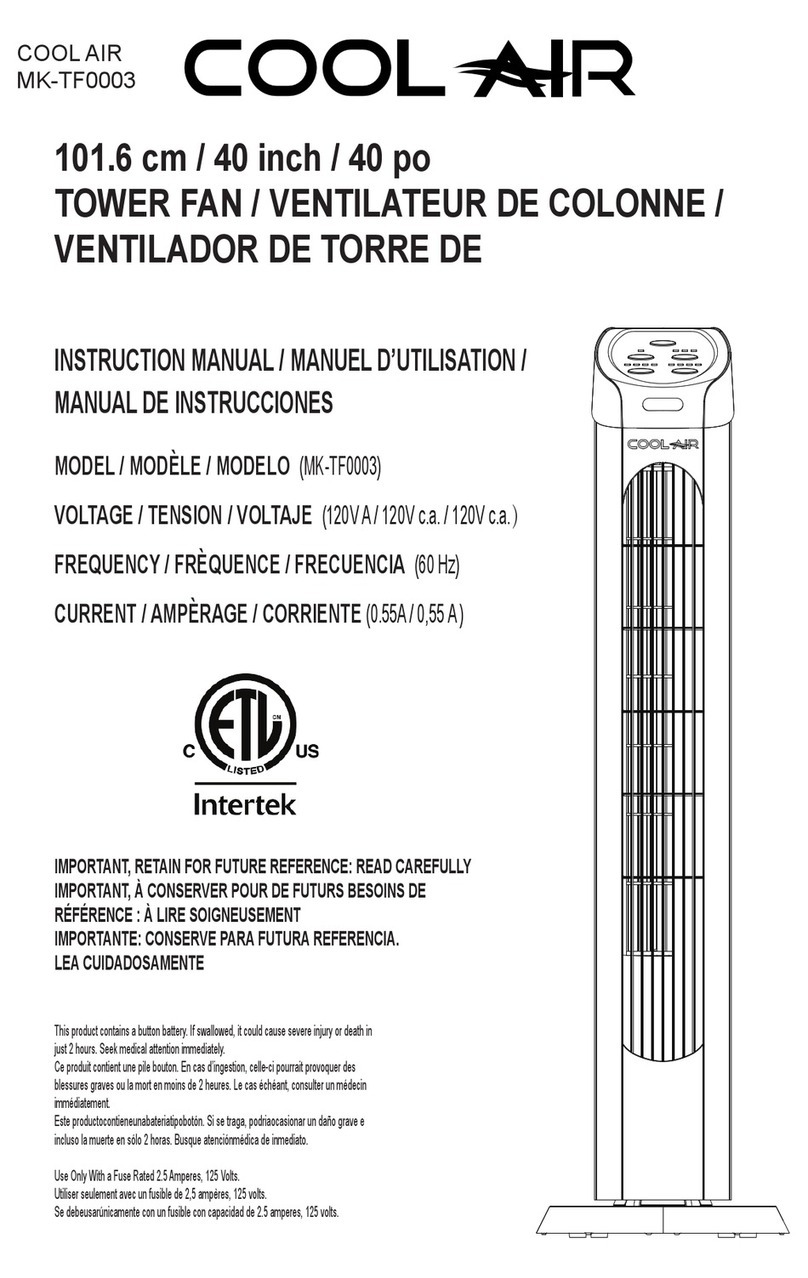
CONE ASSEMBLY
Next, the damper door ring assembly should be fastened to the
cone. Note that the damper door ring assembly has a top — where
the door-restraining cable is permanently attached — and a bottom
(where the cable spring is held in place for shipment by a rubber
band). Take the damper door ring assembly, making sure the doors
open downward, and insert it at an angle into the cone as shown in
Figure 15. The top end with the door-restraining cable permanently
attached should be opposite the drain hole in the cone. Once the
entire ring assembly has been placed inside the cone, level the ring
and align the pre-drilled ring holes with the corresponding
overlapping holes in the cone. From the inside of the assembly,
place a 1/4” X 1-1/4” bolt through the holes in the 3-o'clock and 9-
o’clock positions of the ring (locating the drain hole at the 6-o’clock
position), through the Handles, and fasten with two 1/4” whiz-lock
nuts. Continue fastening the door assembly to the cone using two
5/16” X 1/2” self-drilling screws: one adjacent to the drain hole
(bottom), and one on the opposite side (top) of the cone. See
Figure 16.
Page 5
The discharge cone consists of four cone quarter
panels that are joined by an interlocking tab-and-
slot design. The panels used for the top and
sides of the cone are identical. The bottom cone
panel has a 3/4” drain hole located in the middle
of the panel towards the small diameter end.
Begin construction by placing one panel on the
ground. Slide a 2x4 under the slotted edge of
the cone as shown in Figure 10. Next, aligning
the tabs in a second panel with the slots of the
first, join the two panels by inserting the tabs into
the slots — see Figure 11. Fasten the two panels
together using two 1/4” X 3/4” bolts up through
the bottom of the panels and two 1/4” whiz-lock
nuts in the end overlapping holes of the two
panels, as shown in Figure 12. Repeat this
process for the two remaining panels. The 4
panels in the flat is shown in Figure 13.
Now, the cone may be completed by fastening
the fourth panel to the first panel. To do this,
bring the edge of the fourth panel to the edge of the first and insert the tabs into the slots. Fasten the first and
fourth panels using two 1/4” X 3/4” bolts and four 1/4” whiz-lock nuts in the end overlapping holes of the two panels.
The cone should now be placed such that the larger diameter opening is on the ground as shown in Figure 14.
A Handle Mounting Hole is located near the center of the Side Panels. (The Side
Panels are the two panels adjacent to the Bottom Panel, which contains the drain
hole, as shown in Figure 14.) Once all four panels are fastened together, attach
one end of a Handle to the Side Panel using a 1/4” X 3/4” bolt, through the Handle
Mounting Hole of the Side Panel and then through one end of the Handle.
Fasten with a 1/4” whiz-lock nut. Do not fasten the other side of the Handle at this
time. Repeat this process with the other Handle on the other Side Panel.
Figure 15 — Damper Ring Insertion
Figure 14
1/4” Bolt
& Nut
Drain
Hole
Door-Restraining
Cable End
Figure 13 — Cone Panels in the Flat
Bottom
Panel
Figure 10
Figure 12 Figure 11
Handles


































